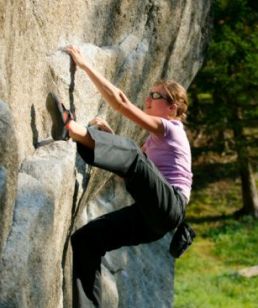In case you are a beginner in climbing, first and most important is the knowledge about the climbing issues and a certain ethic you need to follow.
The climbing community’s basic principle is one – Leave no trace and this is easy to understand.
Anyone, who goes climbing in the wilderness knows how important is to feel the bond with the nature and to find traces left by other wouldn’t be very pleasant.
In case you are just starting, do some researches about the basic climbing trails, as well as the techniques you will eventually need.
Your research needs to include the access and the designated trails to the climbing areas. Get the information from guidebooks, online sources or simply go to nearest climbing shops.
It is extremely important to pass some climbing course before you are going climbing yourself in the great outdoors.
The experts are advising always to pay attention about the color of the rocks. This will influence what color of chalk you are going to use. It is very important to find out more about the site’s climbing ethic.
Make sure you know if there are specific guidelines about the climbing like the removable protection or leaving marks on the rocks.[rock climbing]










